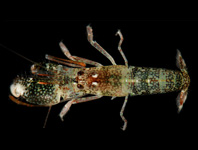Abstract
The distribution, species richness and ecology of Trichoptera, the diversity of benthic diatoms, and hydrochemical data in 7 springs in the vicinity of Łódź were investigated in 2011. In total, 17 Trichoptera taxa and more than 300 diatom taxa were collected from the studied springs. Trichoptera and especially diatom taxa are very sensitive indicators of ecological conditions; both showed a strong response to degradation in lowland springs. On the basis of faunal, diatom microfloral, and hydrochemical data, the typology of springs of the vicinity of Łódź is proposed. Two groups of factors (differentiating and non-differentiating) which contribute to distinguishing the studied springs are described. Additional experiments and observations were done on Trichoptera, including their life cycles, biology, and larval diet. In particular, the abundance of common diatom taxa in the guts of Silo sp. larvae was investigated.
References
Bartnik, A. (1999) Źródła okolic Łodzi. Aretuza, 1 (3), 2–3.
Biesiadka, E. (1980) Water mites (Hydracarina) of the eutrophic Lake Zbęchy (Lesznovoiv). Polish Ecological Studies, 6, 247–262.
Botosaneanu, L. & Malicky, H. (1978) Trichoptera. In: Illies, J. (Ed.), Limnofauna Europaea. Gustav Fisher Verlag, Stuttgart, pp. 333–359.
Czachorowski, S. (1990) Caddisflies (Trichoptera) of the springs of the Kraków-Częstochowa and Miechów Uplands (Poland). Acta Hydrobiologica, 32, 391–405.
Czachorowski S. (1999) Chruściki (Trichoptera) źródeł Polski—stan poznania. In: Biesiadka E. & Czachorowski, S. (Eds.), Źródła Polski—stan badań, monitoring i ochrona. Wydawnictwo Wyższej Szkoły Pedagogicznej, Olsztyn, pp. 59–72.
Dumnicka, E., Galas, J. & Koperski, P. (2007) Benthic invertebrates in karst springs: Does substratum or location define communities? International Review of Hydrobiology, 92 (4–5), 452–464.
http://dx.doi.org/10.1002/iroh.200610991Glazier, D.S. (1998) Springs as model systems for ecology and evolutionary biology: A case study of Gammarus minus Say (Amphipoda) in mid-Appalachian springs differing in pH and ionic content. In: Botosaneanu, L. (Ed.), Studies in Crenobiology: The Biology of Springs and Springbrooks. Backhuys. Leiden, pp. 49–62.
Holt, E.A. & Miller, S.W. (2011) Bioindicators: Using organisms to measure environmental impacts. Nature Education Knowledge, 3 (10), 8. Available from: http://www.nature.com/scitable/knowledge/library/bioindicators-using-organisms-to- measure-environmental-impacts-16821310 (accessed 15 February 2013)
Kondracki, J.A. (2011) Geografia regionalna Polski. Polskie Wydawnictwo Naukowe, Warszawa. 444 pp.
Macioszczyk A. (1987) Hydrogeochemia. Wydawnictwo Geologiczne, Warszawa. 475 pp.
Majecki, J. (2006) Chruściki (Trichoptera) regionu łódzkiego. Wydawnictwo Uniwersytetu Łódzkiego, Łódź. 162 pp.
Moniewski, P. (2004) Źródła okolic Łodzi. In: Turkowska, K. (Ed.), Acta Geographica Lodziensia, 87. Łódzkie Towarzystwo Naukowe, Łódź, 140 pp.
Oemke, M.P. (1984a) Diatom feeding preferences of Glossosoma nigrior (Banks) larvae, stream grazers in two southern Michigan streams. In: Morse, J.C. (Ed.), Proceedings of the 4th International Symposium on Trichoptera, Clemson, South Carolina, 11−16 July 1983. Dr W. Junk Publishers, The Hague, pp. 285–290.
Oemke, M.P. (1984b) Interactions between a stream grazer and the diatom flora. In: Morse, J.C. (Ed.), Proceedings of the 4th International Symposium on Trichoptera, Clemson, South Carolina, 11−16 July 1983. Dr W. Junk Publishers, The Hague, pp. 291– 300.
Pereira, L.R., Cabette, H.S.R. & Juen, L. (2012) Trichoptera as bioindicators of habitat integrity in the Pindaı´ba river basin, Mato Grosso (Central Brazil). Annales de Limnologie—International Journal of Limnology, 48, 295–302.
http://dx.doi.org/10.1051/limn/2012018Rdzany, Z. (2008) Procesy ekstremalne w zapisie osadów i form warciańskich regionu łódzkiego. Landform Analysis, 8, 65–68.
Sada, D.W. & Pohlmann, K.F. (2004) Spring inventory and monitoring protocols. In: Sada, D.W. & Pohlmann, K.F. (Eds.), Conference Proceedings, Spring-fed Wetlands: Important Scientific and Cultural Resources of the Intermountain Region, May 7–9, 2002, Las Vegas, NV. Available from: http://www.dri.edu/images/stories/conferences_and_workshops/spring-fed-wetlands/spring-fed-wetlands-sada-pohlmann-protocol.pdf (accessed 15 February 2013)
Szczęsny, B. (2007) Acrophylax sowai sp. n. (Trichoptera: Limnephilidae) from the Western Carpathians. Aquatic Insects, 29, 131–137.
http://dx.doi.org/10.1080/01650420701268832Szczęsny, B. & Godunko, R.J. (2007) Caddis flies (Insecta: Trichoptera) in the collection of the State Museum of Natural History, National Academy of Sciences of Ukraine in Lviv. Acta Zoologia Cracoviensia, 50B (2), 27–43.
http://dx.doi.org/10.3409/000000007783995156Tomaszewski, C. (1965) Chruściki Trichoptera. In: Bazyluk, W. (Ed.), Katalog Fauny Polski, 28 (5). Państwowe Wydawnictwo Naukowe, Warszawa, pp. 1–104.
Tittizer, T. (1999) Benthos. In: Tümpling, W. & Friedrich, G. (Eds.), Methoden der biologischen Wasseruntersuchung. G. Fischer Verlag, Jena, Studgard, Lubeck, Ulm, pp. 133–135.
Vinebrooke, R.D., Cottingham, K.L., Norberg, J., Scheffer, M., Dodson, S.I., Maberly, S.C. & Sommer, U. (2004) Impacts of multiple stressors on biodiversity and ecosystem functioning: the role of species co-tolerance. Oikos, 104, 451–457.
http://dx.doi.org/10.1111/j.0030-1299.2004.13255.xŻelazna-Wieczorek, J. (2006) Zbiorowiska okrzemek (Bacillariophyceae) w wodach źródlanych zlewni Dzierżąznej. In: Burchard, J. & Ziułkiewicz, M. (Eds), Stan jakości wód zlewni Dzierżąznej. Stan i antropogeniczne zmiany jakości wód w Polsce IV. Wydawnictwo Uniwersytetu Łódzkiego, Łódź, pp. 113–129.
Żelazna-Wieczorek, J. & Bik, A. (2009) Dynamika zbiorowisk okrzemek w źródłach o różnym typie hydrobiologicznym. Fragmenta Floristica et Geobotanica Polonica, 16 (1), 155–167.
Żelazna-Wieczorek, J., Sochacka, J. & Ziułkiewicz, M. (2010) Zróżnicowanie zbiorowisk okrzemek w źródłach rezerwatu Struga Dobieszkowska. In: Ziułkiewicz, M. (Ed.), Stan i antropogeniczne zmiany jakości wód w Polsce VI. Wydawnictwo Uniwersytetu Łódzkiego, Łódź, pp. 165–175.
Żelazna-Wieczorek, J. (2011) Diatom flora in springs of Łódź Hills (Central Poland). Biodiversity, taxonomy and temporal changes of epipsammic diatom assemblages in springs affected by human impact. In: Witkowski, A. (Ed.), Diatom Monographs. Vol. 13. A.R.G. Gantner Verlag K.G. Ruggell, Liechtenstein, pp. 1–420.

